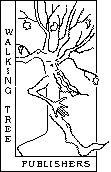Review of Tolkien's The Lord of the Rings Sources of Inspiration

 (to the main page on Tolkien's The Lord of the Rings Sources of Inspiration)
(to the main page on Tolkien's The Lord of the Rings Sources of Inspiration)
The following review appeared in Hither Shore Volume 6 (2010), and is reproduced here with kind permission.
Hither Shore is the journal of the German Tolkien Society (DTG).

Stratford Caldecott, Thomas Honegger (eds.):
Tolkien’s The Lord of the Rings. Sources of Inspiration.
Zurich/Jena: Walking Tree Publishers, 2008, 237 pp.,
Paperback (Review by Marcel R. Bülles)
This book bears testimony to a conference which took place at Exeter College, Oxford, in 2006, and which still is the only conference ever held about Tolkien studies at his former college. The outstanding setting led to this conference volume offering articles roughly divided into three major topics: biographical, mythos and modernity, mythos and logos.
John Garth enlarges on his seminal biography Tolkien and the Great War with more material from Tolkien’s time at Exeter College, concentrating on his student life and the impact of the War on Exeter. He further illustrates creative links of his aspirations as poet and writer with fellow students. Peter Gulliver, Edmund Weiner and Jeremy Marshall are editors for the Oxford English Dictionary and follow up on their interesting publication The Ring of Words with more examples from the OED archives on how Tolkien worked and how language sparked in him flurries of creative output – not to forget the importance of the correct plural of ‘dwarf’, i.e. ‘dwarves.’ Verlyn Flieger rounds off the ‘biographical’ section with an article on the connection of two of Tolkien’s closest friends, Rob Gilson and Geoffrey Smith, who died during World War I with one of his main literary characters, Frodo Baggins. She convincingly likens Frodo’s losses to Tolkien’s own situation after losing two of his best friends in battle.
Patrick Curry begins the second section (mythos and modernity) by a comparison of the concept of ‘enchantment’ in The Lord of the Rings with Verlyn Flieger’s findings in A Question of time, Jan Zwicky’s dichotomy of the ‘lyrical’ and ‘technological’ and Robert Hepburn’s idea of ‘wonder.’ Following Tolkien’s elucidation of enchantment in On Fairy Stories he makes a good point in saying that neither pure enchantment nor technological exploitation would work for human existence, only a well-balanced equilibrium. Any need for enchantment is given a bitter sweet taste in the realisation that there is a need for it but one may never depend on it. Marek Oziewicz likens Tolkien’s own life, career and concept of myth with Italian philologist Giovanni Battista Vico’s writings, stating that their recent success lies in their affirmation of the "value of myth and poetic understanding in the construction of human individuals and societies." Peter M. Candler Jr., touches in Frodo and Zarathustra: Beyond Nihilism in Tolkien and Nietzsche on different concepts as seen by these two authors who were both philologists but does not quite succeed in providing a coherent argument. Starting off the third section (mythos and logos) Leon Pereira OP posits that Tolkien’s own mindset as a Roman-Catholic Christian, his Weltanschauung, is at the heart of his writing and that understanding his work is only possible from a theistic point of view. Unfortunately, the Dominican friar does not produce a fully convincing argument. Alison Milbank raises an interesting point in finding close links between Tolkien’s own concept of fantasy as exemplified in On Fairy Stories and what he called ‘Chestertonian fantasy.’ Both Chesterton and Tolkien had been influenced by resurgent Thomism in their time and the question as to how creativity also had a religious dimension. Guglielmo Spirito OFM Conv. addresses the image of light in Tolkien’s work from the viewpoint of its healing power as it has been described in Roman- Christian theology drawing on an impressive number of diverse resources. The last article is by Stratford Caldecott, organizer of the conference, who tackles the ever fascinating question of ‘Tolkien’s project’, a mythology for his England, by following different lines of tradition such as the Atlantis story, Britain’s celtic heritage, and the influence of romanticism on this very English author while always keeping in mind Tolkien’s avid Catholicism.
Meeting Priscilla Tolkien, Walter Hooper and Robert Murray SJ in the Rector’s very own home during this conference at Exeter College was exceptional and one can only hope that this collection of generally well-conceived articles may provide an inkling of this one-time experience.
MARCEL R. BÜLLES

Read other reviews of Tolkien's The Lord of the Rings Sources of Inspiration
Read reviews of other Walking Tree Publishers books

